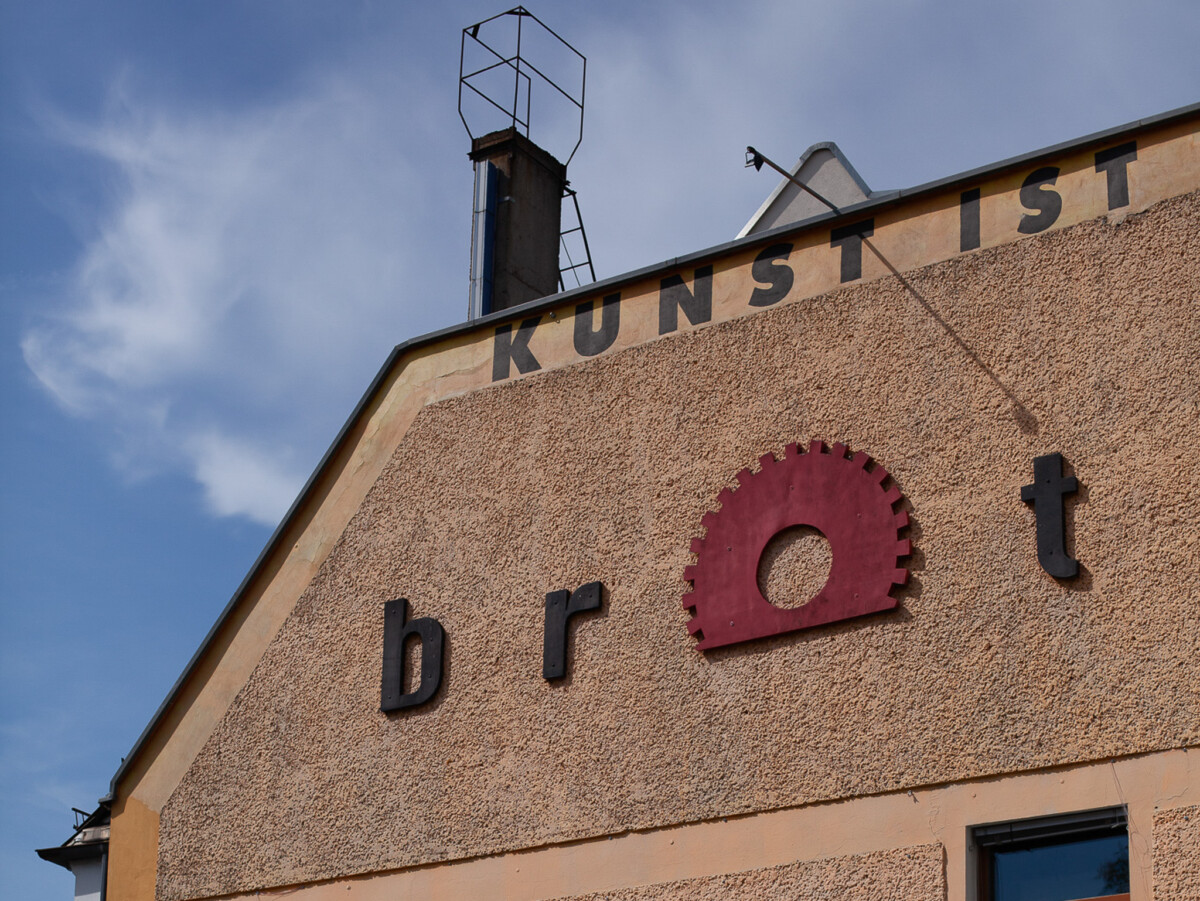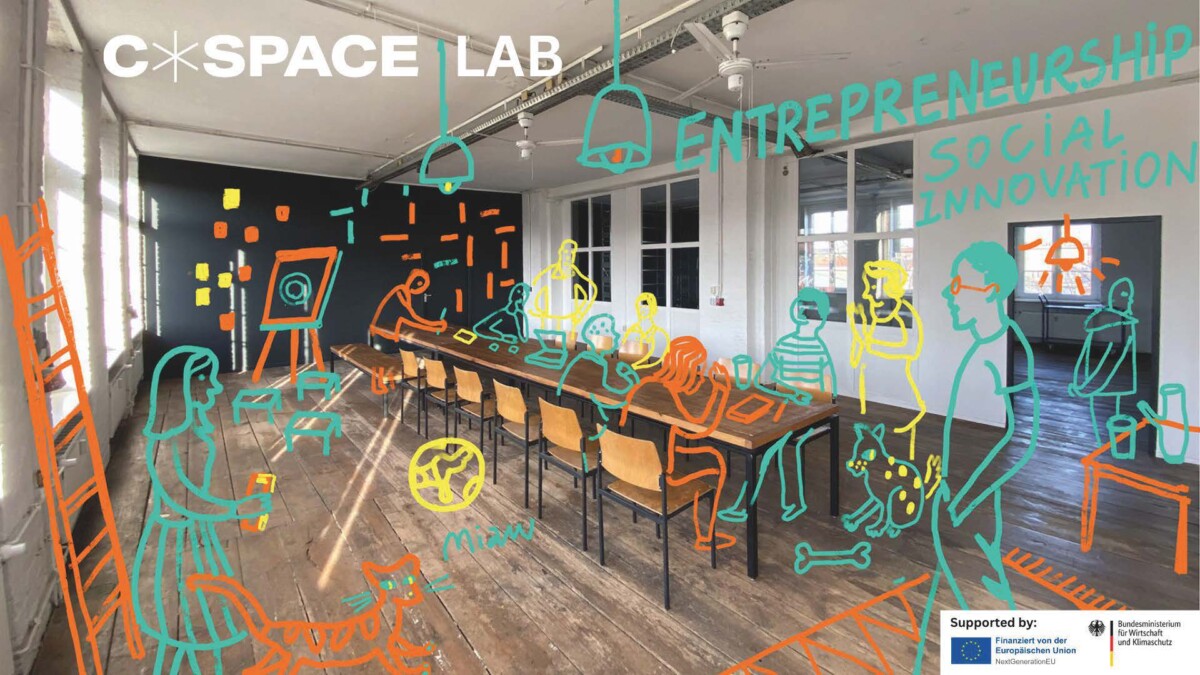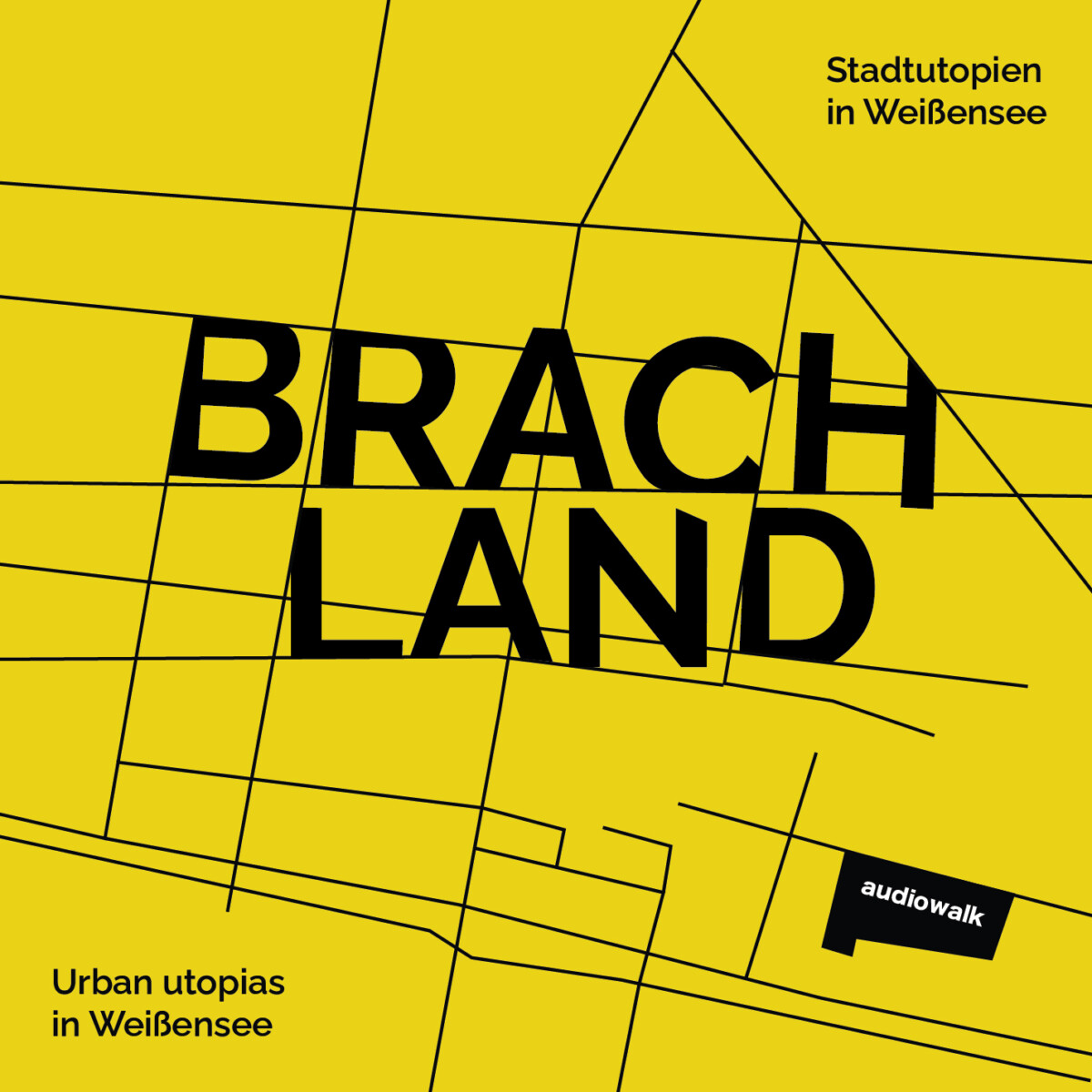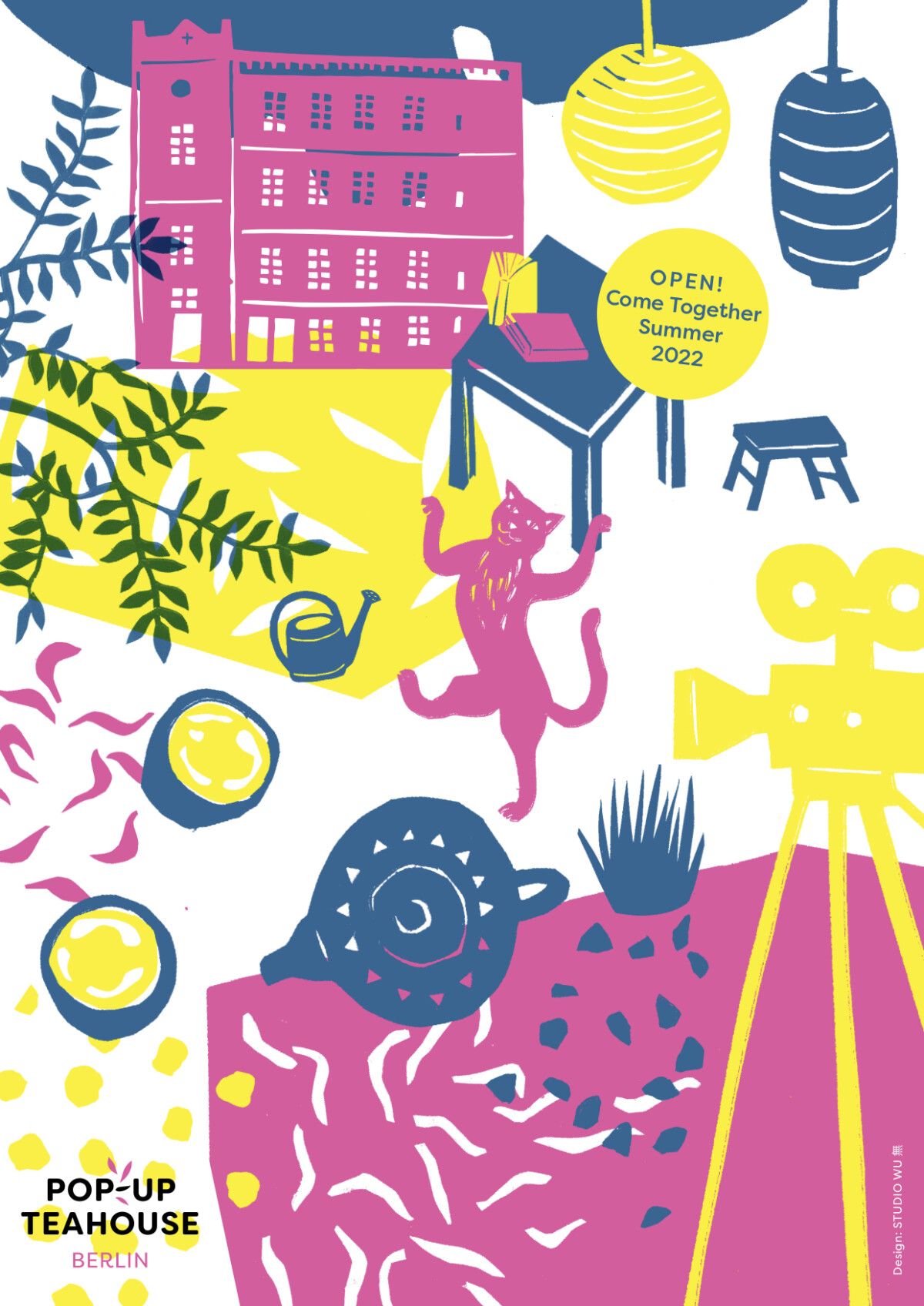
“Well, I’m old and have been here for a while — don’t expect short stories.”
Brotfabrik is most likely the first place that comes to mind when someone asks about cultural hotspots in Weißensee. Therefore, a conversation with its managing director, Jörg Fügmann, was our first choice for this interview series with visionaries of Weißensee. Jörg agreed to the interview with some reluctance: “Actually, I’ve trying to step back and let others do the talking.” Fortunately, an exception was made because we believed he could provide a unique perspective on the development and future of Langhanskiez, showcasing the brilliant example of Caligariplatz — a square in front of Brotfabrik — that Jörg and Glashaus e.V. brought to life 20 years ago.
We met for a conversation and morning coffee in Jörg’s office on the upper floor of Brotfabrik. The walls were covered with shelves full of folders and papers, and the window looked out onto the roof — where pigeons would gather, eagerly waiting for the food that Jörg provided as one of his routine activities every morning. It was there that I also met Inci, the fierce cat from the huge poster on Brotfabrik’s façade. “Not cuddly, for 30 years” — the sign reflects the philosophy of the cultural center Brotfabrik.


Caligariplatz as visionary project
Katya: I recently discovered that Caligariplatz was not originally a square but rather a crossroad. I read on this website that you came up with the idea to transform it into a square and give it a name. How did you manage it, and who were the people involved in it?
Jörg: Let me briefly explain the history. Until around 1920, there were several houses in front of Brotfabrik. These houses were in poor condition and were demolished in the early 1920s. A replacement building was constructed right in front of our façade, but it was damaged during the war and demolished in the 1950s. So, practically, there was no open space until then.
However, the space was limited because Heinersdorfer Straße ran through it. Later, the tram line was rerouted from Gustav-Adolf-Straße to Langhansstraße, and Heinersdorfer Straße was cut off. Only then did the present-day square area come into existence. In the 1960s, a public toilet was built in front of our house. In the 1990s, there was a very active weekly market here, which disappeared later. Frankly, the square looked terrible.
Later, we thought it could actually become a square and it deserved a name. We were a youth club at the time and then founded an association. In the 1990s, we had enough internal tasks to deal with, we were building and organizing a space. We didn’t pay much attention to the outside because we didn’t have the energy for it. But that changed a bit around 2001.


It was always clear that the name should be connected to the film industry. Eventually, we chose the name “Caligariplatz,” even though it was named after a fictional character from the film “The Cabinet of Dr. Caligari.” We submitted the request to the district, and it was approved relatively quickly. In September 2001, we put up a self-made street sign, and later official street signs were sponsored to us. So, officially, we had our address – Caligariplatz 1, which is fantastic for a cultural center!
Katya: How did it progress from there?
Jörg: With the name change, we also wanted to change the appearance of the square. The Glashaus e.V. launched an initiative that residents, market and local business owners could join. We contacted various universities, colleges, and artists to submit a square design. 42 submissions were then exhibited for further discussion and voting at the Kino Delphi in September 2001.
During this exhibition, we received information that Prenzlauer Promenade between the intersection and am Steinberg would be completely rebuilt, and the square would have to be paved again. We thought it was a good opportunity to collectively shape something, but it turned out to be quite an absurd process in Germany. The square belongs to the district, but the street belongs to the state of Berlin. This main road leads to the highway and runs through places like Brandenburger Tor, Siegessäule, Ernst-Reuter-Platz, and Bismarckstraße. The Senate eventually told us that we were responsible for the square’s design during this time and that we could use the €75,000 they allocated for paving. In January 2003, a jury selected the idea proposed by Susann Becker and Kerstin Gehring.
As you can see, the plan was a bit different from what it looks like now. In the design, the shapes flow, and there are no perfect squares. Ironically, I was in Portugal at that time. There, you see street paving everywhere, magnificent mosaics and shapes. You come to Germany, and they say everything has to be square. Due to budget constraints, we couldn’t implement all the planned elements, so the square appears a bit bare.
What could still be changed? For example, there’s this odd turnaround space, the so-called “Wendehammer.” We wanted to get rid of it so that the square becomes bigger. Currently, there’s also an issue with bicycles on the square. The square is basically constantly divided by rushing cyclists. If they were to paint a wide bicycle lane across the square, the cyclists would only go faster, and that solution would further divide the square. In this situation, I step back a bit because I studied culture, so urban development and traffic planning are not part of my expertise. Others have studied that, and I expect them to come up with a good solution for this situation.
Katya: Almost two decades have passed since this square was created. Are you satisfied with its current state?
Jörg: Let me get political here. I come from the former East Germany that was governed by older men who experienced the war. They eventually created a country where there was no war, no destroyed houses, no hunger, and no unemployment. For them, that was an enormous achievement. Therefore I can’t blame them. But the following generation wanted more; thse achievements were their starting point. It’s the same with our square: I understand that some people are not satisfied with it because they take it as a basis for further improvement; my starting point was completely different. We, as a small association, have come a long way. If people want to further develop it, I’m ready to go along with it. We don’t want to be at the forefront anymore, but you can count on our support.

Katya: There is much talk about activating the square. What do you understand by that?
Jörg: I am always a bit puzzled and wonder what exactly you mean by that. We had an interesting experience on August 14, 2022, during the Kultursommer, organized by us and funded by the Senate. There were certain equipment like palm trees and deck chairs. I saw that only this was already enough for many people. They didn’t need cultural events or theater performances. They simply met, relaxed, and either enjoyed their own company or talked with others. That could be a possibility if we create that kind of atmosphere in the future for the square. Simple and without too much fuss. More benches or other seating options would be good.
Brache Zukunft / Wasteland “Future”
Katya: Is there hope that something other than commercial buildings will be created on the vacant lot behind the Brotfabrik?
Jörg: The story is crazy. Previously, everything was built up, but the buildings were destroyed during the war. Then, it became a storage area. After the reunification, an auto repair shop opened there. When it closed, a Lebanese investor bought the properties. He demolished the building that stood in the middle and turned the area into a parking lot. A beverage store and an office building were also put there.

Originally, there was a residential development project planned, and everything was to be demolished. We resisted this because cultural facilities next to residential buildings are always problematic. We faced a physical challenge: we were practically at the top of a funnel. If we had been loud, the noise would have spread all over the courtyard. So, we got involved and tried to alarm the district about the situation. Then, Cresco bought the land. They initially planned micro-apartments for wealthy students on that vacant lot. We were allowed to use the area temporarily for the Brache Zukunft festival. They planned to start construction two years ago, but so far, nothing has happened.
Kiezplatz: It was our most beautiful, but also our failed project
Katya: You had an initiative on another wasteland at the corner of Gustav-Adolf-Straße and Streustraße. Can you tell me more about this initiative?
Jörg: Previously, it was a ruine with a small hill and a house for sale. The entire area cost about €150,000. At the time, when the opportunity arose, no one took it. Any initiative could have easily achieved it through political pressure on the district or the senate or through donations. This is not far-fetched; it’s not a utopia. It’s normal development policy for such densely populated residential areas that previously had nothing.
The plot was empty. So, we started an initiative, together with the Technischer Hilfswerk. First, we removed the rubble and redesigned the place. We received a small grant, but it also didn’t cost much. We set up a mobile home, a barbecue area, and a table tennis table.
“What do you want on my street? Why did you put a bench near my tree?”
As we worked there, people walked by and talked about it. They already knew what we were doing. But, the typical German bureaucratic mentality still prevailed among people. “Why should I work to create a public place? That’s not my responsibility. The public authorities should create a public square, not me as an individual, as a citizen.” That’s exactly the embodiment of this bureaucratic idea. “What do you want on my street? Why did you put a bench near my tree?” It’s now a bit more relaxed because there have been some conflicts. But initially, people planted small flowers, and then everything got removed.
Katya: How long did this project last?
Jörg: Maybe 1.5 years. It ended because the land was sold. The owners then built on it themselves. It was our most beautiful, but also our failed project because we couldn’t get the residents involved. At the same time, we are just a cultural center. We wanted to initiate something. We just wanted to bring impulses to the neighborhood.
It would have been different now. There are certainly other wastelands, but now they’re all worth their weight in gold. We’d have to involve someone from politics to approach the real estate and say that we – the public, the residents, the district – have interests to develop it into something.


Katya: Are there protests in Weißensee? Are there citizen initiatives?
Jörg: Yes, there are citizen initiatives, but we don’t take to the streets to protest. And that’s just a pity.
I have two different views on this. On one hand, I have a skeptical worldview. There are new buildings with a playground, a green area, and a bicycle shed. They have everything they need. The newcomers, the “bad ones.” They don’t need to engage in the neighborhood. Why should they? If they want green spaces, they just go to their own courtyard. They go to work in the morning and come back in the evening.
On the other hand, there are also people who have just moved in and actively participate. There was a woman who campaigned to create a community garden at the corner of Goethestraße and Lederstraße. At that moment, I thought, maybe something will be achieved after all. It’s not fair to blame them for owning property. It’s too easy to accuse them of that. Where else should they go? But to be honest, it’s heart-breaking to see that they almost exclusively build private residential houses here.
You know, I appreciate the quietness. I like to read, spend time with my family, and so on. I don’t necessarily need crowds of people around me. But, of course, I still find it nicer to live in a neighborhood where people are not isolated, where they care about each other, where the outside infrastructure is developing. Besides, it’s my job to work for the public, to be there for the people. Sometimes, my colleagues forget that a bit. They focus too much on art and too little on people. But my goal is to work for the people. That may sound big, but that’s what we’re here for.






